‘Salvator Mundi is a painting of the most iconic figure in the world by the most important artist of all time,’ says Loic Gouzer, Chairman, Post-War and Contemporary Art at Christie’s in New York. ‘The opportunity to bring this masterpiece to the market is an honour that comes around once in a lifetime. Despite being created approximately 500 years ago, the work of Leonardo is just as influential to the art that is being created today as it was in the 15th and 16th centuries. We felt that offering this painting within the context of our Post-War and Contemporary Evening Sale is a testament to the enduring relevance of this picture.’
Its inclusion in the National Gallery’s landmark exhibition of 2011-12 — the most complete display of Leonardo’s rare surviving paintings ever held — came after more than six years of painstaking research and inquiry to document the painting’s authenticity. This process began shortly after the painting was discovered — heavily veiled with overpaints, long mistaken for a copy — in a small, regional auction in the United States.
The painting’s new owners moved forward with admirable care and deliberation in cleaning and restoring the painting, researching and thoroughly documenting it, and cautiously vetting its authenticity with the world’s leading authorities on the works and career of the Milanese master. Dianne Dwyer Modestini, the conservator who restored the work in 2007, recalls her excitement after removing the first layers of overpaint, when she began to recognise that the painting was by the master himself. ‘My hands were shaking,’ she says. ‘I went home and didn’t know if I was crazy.’
The newly discovered masterpiece, dating from around 1500, depicts a half-length figure of Christ as Saviour of the World, holding a crystal orb in his left hand as he raises his right in benediction. Leonardo’s painting of the Salvator Mundi was long believed to have existed but was generally presumed to have been destroyed.
In 1650, the celebrated printmaker Wenceslaus Hollar copied the painting in an etching, which he signed and dated, and inscribed ‘Leonardus da Vinci pinxit ’, Latin for ‘Leonardo da Vinci painted it’. Two preparatory red-chalk drawings by Leonardo for Christ’s robes are in the English Royal Collection at Windsor and have long been associated with the composition, which has also been known through more than 20 painted copies by students and followers of the artist.
Leonardo da Vinci (Vinci 1452-Amboise 1519), A study of drapery for a Salvator Mundi, c.1504-8. Red chalk with touches of white chalk and pen and ink on pale red prepared paper, RCIN 912524. Royal Collection Trust/© Her Majesty Queen Elizabeth II 2017
Leonardo da Vinci (Vinci 1452-Amboise 1519), A study of drapery for a Salvator Mundi, c.1504-8. Red chalk with pen and ink and white heightening on pale red prepared paper, RCIN 912525. Royal Collection Trust/© Her Majesty Queen Elizabeth II 2017
Luke Syson, in the catalogue to the exhibition, Leonardo da Vinci: Painter at the Court of Milan, has speculated that Leonardo may have made the painting for the French royal family and that it was brought to England by Queen Henrietta Maria when she married Charles I in 1625. What is known for certain is that it belonged to King Charles I (1600-1649), where it is recorded in the inventory of the royal collection drawn up a year after his execution.
What is known for certain is that it belonged to King Charles I (1600-1649), where it is recorded in the inventory of the royal collection drawn up a year after his execution.
The royal inventory records that the painting was sold at the ‘Commonwealth Sale’ on 23 October 1651. Nine years later, when Charles II was restored to the throne and his late father’s possessions were recalled by an act of Parliament, the painting was returned to the Crown. A 1666 inventory of the collection of Charles II at Whitehall lists it among the select paintings in the King’s closet.
The painting disappeared from 1763 until 1900 when — its authorship by Leonardo, origins and illustrious royal history entirely forgotten — it was acquired from Sir Charles Robinson, who purchased the picture as a work by Leonardo’s follower, Bernardino Luini, for the Cook Collection, Doughty House, Richmond. By this time, Christ’s face and hair had been extensively repainted. A photograph taken in 1912 records the work’s altered appearance.
In the dispersal of the Cook Collection, the work was ultimately consigned to auction in 1958 where it fetched £45, after which it disappeared once again for nearly 50 years, emerging only in 2005 — its history still forgotten — when it was purchased from an American estate.
In 2007, an extensive restoration of Salvator Mundi was undertaken by Dianne Dwyer Modestini, Senior Research Fellow and Conservator of the Kress Program in Paintings Conservation at the Conservation Center of the Institute of Fine Arts, New York University. Dr. Modestini has extensively documented the painting’s state of preservation and her conservation process, concluding that the painting was indeed an autograph work by Leonardo da Vinci.
Both of Christ’s hands, the exquisitely rendered curls of his hair, the orb, and much of his drapery are in fact remarkably well preserved and close to their original state.
Both of Christ’s hands, the exquisitely rendered curls of his hair, the orb, and much of his drapery are in fact remarkably well preserved and close to their original state. In addition, the painting retains a remarkable presence and haunting sense of mystery that is characteristic of Leonardo’s finest paintings. Above the left eye (right as we look at it), are still visible the marks that Leonardo ‘made with the heel of his hand to soften the flesh,’ as Martin Kemp has observed. ‘The face is very softly painted, which is characteristic of Leonardo after 1500. And what very much connects these later Leonardo works is a sense of psychological movement, but also of mystery, of something not quite known. And he draws you in but he doesn’t provide you with answers…. It has the uncanny strangeness that the later Leonardo paintings manifest.’
Above the left eye (right as we look at it), are still visible the marks that Leonardo ‘made with the heel of his hand to soften the flesh,’ as Martin Kemp has observed.
As the possibility of Leonardo’s authorship became clear, it was decided to show the painting to a group of international scholars and experts in Leonardo’s works, so that an informed consensus about its attribution might be obtained. The initial phase of the conservation of the painting had been completed in the autumn of 2007. At that time, the painting was viewed by the late Mina Gregori (University of Florence) and Sir Nicholas Penny (then, Chief Curator of Sculpture, National Gallery of Art, Washington, D.C.; subsequently Director of The National Gallery, London). The study and examination of the painting by a panel of international scholars resulted in a broad consensus that Salvator Mundi was painted by Leonardo da Vinci.
The study and examination of the painting by a panel of international scholars resulted in a broad consensus that Salvator Mundi was painted by Leonardo da Vinci.
In 2008, the painting was studied at The Metropolitan Museum of Art by museum curators Carmen Bambach, Andrea Bayer, Keith Christiansen, and Everett Fahy, and by Michael Gallagher, Head of the Department of Paintings Conservation. In late May of the same year, the painting was taken to The National Gallery, London, where it was studied in direct comparison with The Virgin of the Rocks, Leonardo’s painting of approximately the same date. Several of the world’s leading Leonardo scholars were also invited to study the two paintings together. These included Carmen Bambach of the Metropolitan Museum of Art, David Allan Brown (Curator of Italian Painting, National Gallery of Art, Washington, D.C.), Maria Teresa Fiorio (Raccolta Vinciana, Milan), Martin Kemp (University of Oxford), Pietro C. Marani (Professor of Art History at the Politecnico di Milano) and Luke Syson, the Curator of Italian Paintings at The National Gallery, who would be the curator of the exhibition, Leonardo da Vinci: Painter at the Court of Milan. More recently, following the completion of conservation treatment in 2010, the painting was again examined in New York by several of the above, as well as by David Ekserdjian (University of Leicester).
Again, there was broad consensus that Salvator Mundi was painted by Leonardo da Vinci, and that it is the single original painting from which the many copies and student versions depend. Individual opinions vary slightly in the matter of dating — most of the consulting experts place the painting at the end of Leonardo’s Milanese period in the later 1490s, contemporary with The Last Supper, while others believe it to be slightly later, painted in Florence (where the artist moved in 1500), contemporary with the Mona Lisa.
Leonardo da Vinci, Mona Lisa, circa 1502. Musée du Louvre, Paris. Photo Scala Art Resource.
The reasons for the unusually uniform scholarly consensus that the painting is an autograph work by Leonardo are several, including the previously mentioned relationship of the painting to the two autograph preparatory drawings in Windsor Castle; its correspondence to the composition of the ‘Salvator Mundi’ documented in Wenceslaus Hollar’s etching of 1650; and its manifest superiority to the more than 20 known painted versions of the composition. Furthermore, the extraordinary quality of the picture — notably the blessing hand and the hair — and its close adherence in style to Leonardo’s known paintings from circa 1500, solidified this consensus.
Powerfully convincing evidence of Leonardo’s authorship was provided by the discovery of numerous pentimenti — preliminary compositional ideas, subsequently changed by the artist in the finished painting, but not reflected in the etching or painted copies. The most prominent of these — a first position for the thumb in the blessing hand, more upright than in the finished picture — was uncovered and photographed during the conservation process.
Powerfully convincing evidence of Leonardo’s authorship was provided by the discovery of numerous pentimenti, such as in the palm of the left hand seen through the transparent orb.
Other pentimenti have been observed through infrared imaging. Luke Syson notes several of these ‘lesser adjustments of the contours elsewhere’ (such as in the palm of the left hand seen through the transparent orb). ‘Such changes of mind,’ he writes, ‘are typical of Leonardo and would be surprising in a copy of an existing design. The head was perhaps executed with the aid of a cartoon; when the picture is examined in infrared, spolveri — pouncing — can be seen running along the line of the upper lip. The rest of the body has a much looser, brushy underdrawing, with further small changes of mind. This combination of careful preparation for the head and much greater improvisation for the body is characteristic of Leonardo.
‘The painting technique is close to that of the Mona Lisa and the Saint John the Baptist,’ Syson continues, ‘the face in particular built up with multiple, extremely thin paint layers, another technical aspect that makes Leonardo’s authorship certain. Like both of these pictures, Salvator Mundi may well have been painted over an extended period of time.’
Technical examinations and analyses have demonstrated the consistency of the pigments, media, and technique discovered in Salvator Mundi with those known to have been used by Leonardo. Syson notes particularly the use of precious lapis lazuli in the Christ’s celestial blue clothes, a practice that was unusual at this date, suggestive of the opulence of the commission.
The many changes, large and small, that Leonardo made in the process of the creation of Salvator Mundi... speak to the probing nature of his genius.
In his painting, Leonardo presents Christ as he is characterised in the Gospel of John 4:14: ‘And we have seen and testify that the Father has sent his Son as the Saviour of the World.’ Christ gazes fixedly at the spectator, lightly bearded with auburn ringlets, holding a crystal sphere in his left hand and offering benediction with his right. As Martin Kemp has noted (in an unpublished essay), ‘...The Saviour literally holds the well-being of the world and its inhabitants in the palm of his hand.’ The format follows the precedent of the ‘Christ Pantocrator’ (‘Ruler of All’ or ‘Sustainer of the World’) from Eastern Orthodox traditions, commonplace in religious imagery dating to Byzantine mosaics, although Leonardo’s Christ is portrayed as resolutely human — unusual at this time — lacking as he does a crown or a halo.
Christ’s orb is an emblem of kingship as well as a symbol of the world itself. As several authors have observed, the tiny specks and inclusions that Leonardo has painstakingly reproduced in the orb indicate that it is meant to be made of rock crystal, the purest form of quartz, and widely believed in the Renaissance to possess formidable magical powers. Rock crystals cut in Antiquity had been set into reliquaries since the Middle Ages, giving the stone sacred associations. Therefore, the very substance of the globe, as well as the perfection of its regular and continuous spherical form, endows it with a nearly miraculous essence.
‘The perfect sphere is seen to contain and transmit the light of the world,’ as Syson notes, and Leonardo here focused his unrivalled painting technique on conveying its transparency and convexity. Leonardo had a well-known interest in minerals that exhibited special optical properties. The artist himself wrote in a scientific treatise that the light which passes through ‘diaphanous bodies’ like glass or crystal produce the ‘same effect as though nothing intervened between the shaded object and the light that falls upon it.’ Modestini notes of the inclusions in the orb that ‘they are astonishing under the microscope. Each has been described by an underpainted middle tone, bracketed by a curlicue of white, and a dark shadow. They vary in size and disposition and are each somewhat different depending on the fall of light. Only Leonardo, with his interest in the natural sciences, would have gone to such obsessive lengths.’
If the format of the painting is deliberately archaic in its symmetrical frontality — Syson and other authors have noted Leonardo’s dependence here on the blessing figure of Christ from the central panel of a 15th-century polyptych by Giotto and his workshop (North Carolina Museum of Art, Raleigh) — the execution of Christ’s face and hands is entirely new in the history of painting and unique to the peculiar genius of Leonardo. The flawless, almost divinely beautiful face that emerges mysteriously from the deepest of shadows, the almost supernaturally penetrating eyes which convey an overwhelming psychological, emotional and spiritual profundity, have no parallels in Western painting until the creation of Mona Lisa and the St. John the Baptist (both, Louvre), works painted by Leonardo around 1500, and the most obvious comparisons in style and manner to the Salvator Mundi.
The many changes, large and small, that Leonardo made in the process of the creation of Salvator Mundi emerged only in the cleaning process. The dramatic shift in the position of the thumb on Christ’s blessing hand, the repositioning of the palm that holds the orb, the significant movements to the bands that cross the stole, and the repositioning of the jewelled ornament attached to his garment beneath the neckband all speak to the primacy and originality of the painting and to its authenticity as Leonardo’s original. But they also speak to the probing nature of Leonardo’s genius, the relentless experimentation, curiosity and perfectionism that led him to abandon, unsatisfied, most of the paintings he started, and resulted in a tiny body of finished masterpieces that rank among the most enigmatic and haunting works in the history of art.
That the rediscovery of the Salvator Mundi is a once-in-a-century addition to this small but monumentally influential corpus is, in and of itself, more than enough reason to celebrate its return; that the painting is also a profoundly moving, affecting and evocative masterpiece by this towering genius of the Renaissance is almost miraculous in itself.
Christie's unveils Leonardo da Vinci's 'Salvator Mundi' (pictured) with Andy Warhol's 'Sixty Last Suppers' at Christie's New York on October 10, 2017 in New York City. Ilya S. Savenok/Getty Images for Christie's Auction House/AFP.

/https%3A%2F%2Fprofilepics.canalblog.com%2Fprofilepics%2F1%2F0%2F100183.jpg)
/https%3A%2F%2Fstorage.canalblog.com%2F03%2F02%2F119589%2F96711876_o.jpg)
/https%3A%2F%2Fstorage.canalblog.com%2F11%2F31%2F119589%2F94773502_o.jpg)
/https%3A%2F%2Fstorage.canalblog.com%2F20%2F83%2F119589%2F94772815_o.jpg)
/https%3A%2F%2Fstorage.canalblog.com%2F26%2F72%2F119589%2F75604929_o.jpg)
/https%3A%2F%2Fstorage.canalblog.com%2F59%2F60%2F119589%2F26458628_o.jpg)

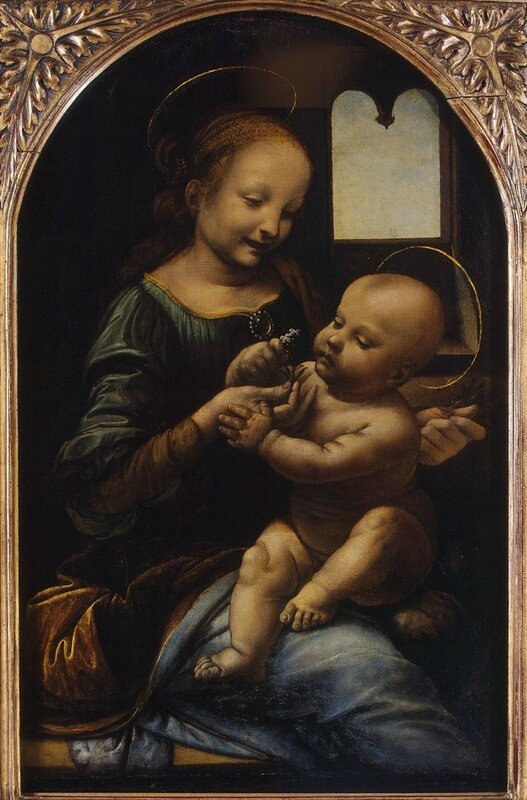
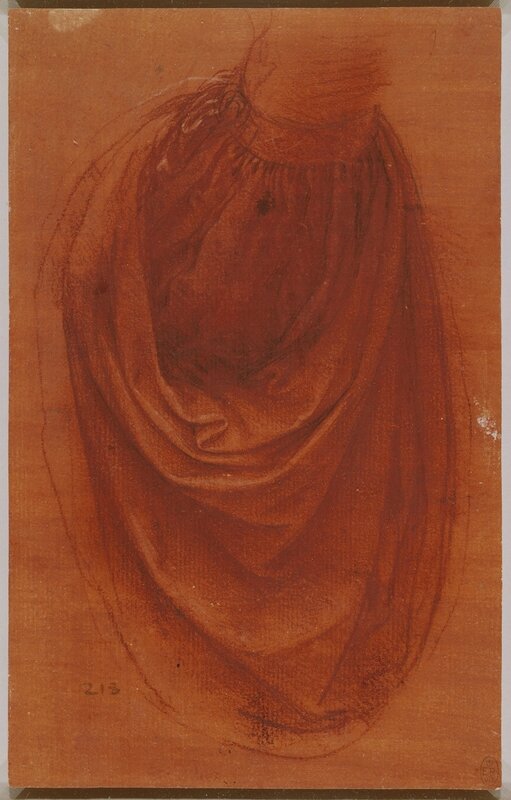



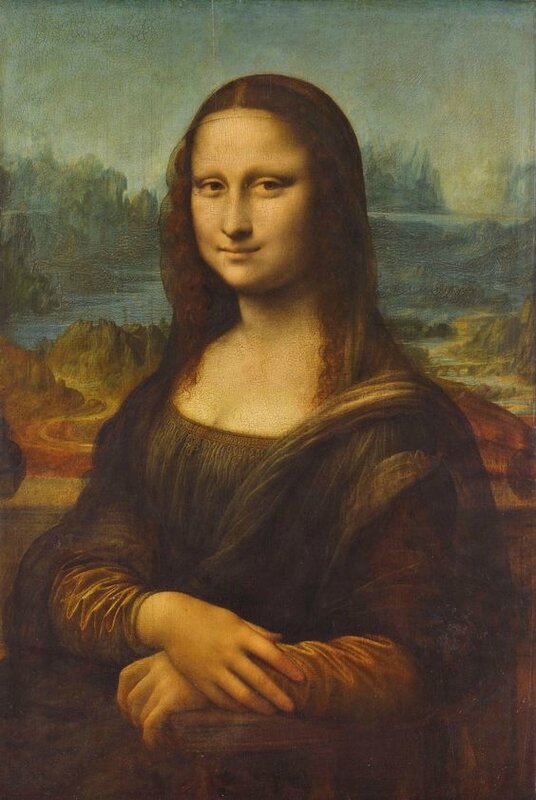

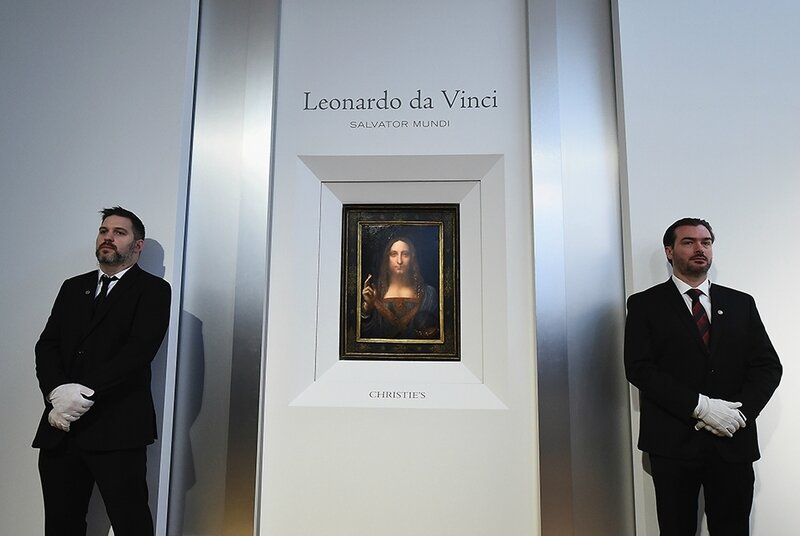
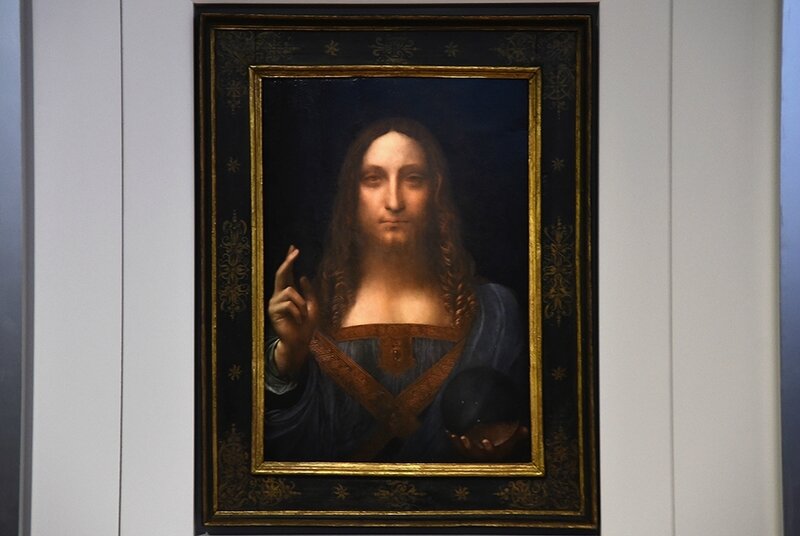


/http%3A%2F%2Fstorage.canalblog.com%2F78%2F02%2F119589%2F129147865_o.jpg)
/http%3A%2F%2Fstorage.canalblog.com%2F76%2F12%2F119589%2F122078065_o.jpg)
/http%3A%2F%2Fstorage.canalblog.com%2F69%2F72%2F119589%2F120628255_o.jpg)
/http%3A%2F%2Fstorage.canalblog.com%2F37%2F47%2F119589%2F117900055_o.jpg)